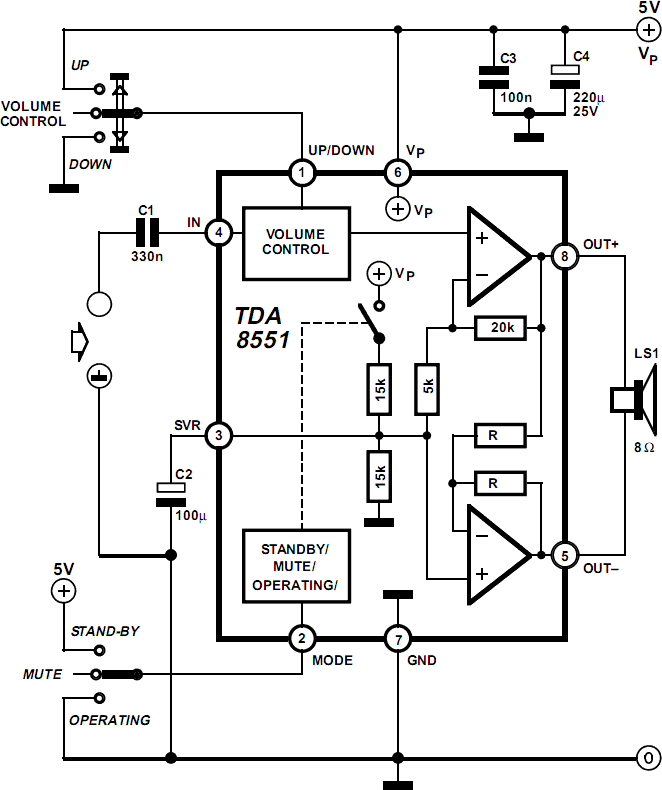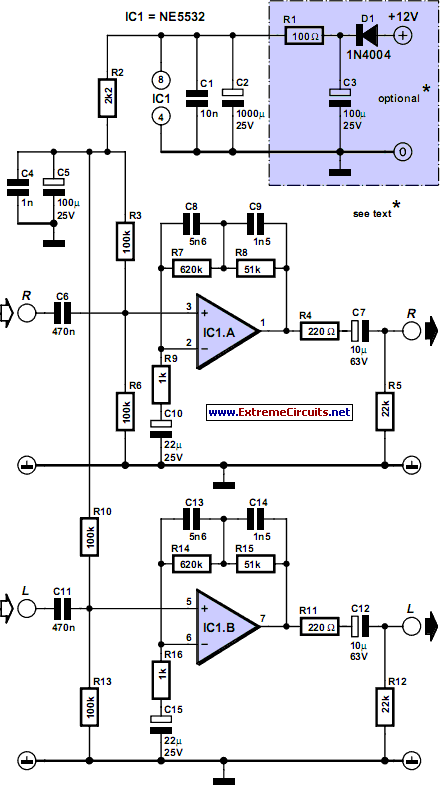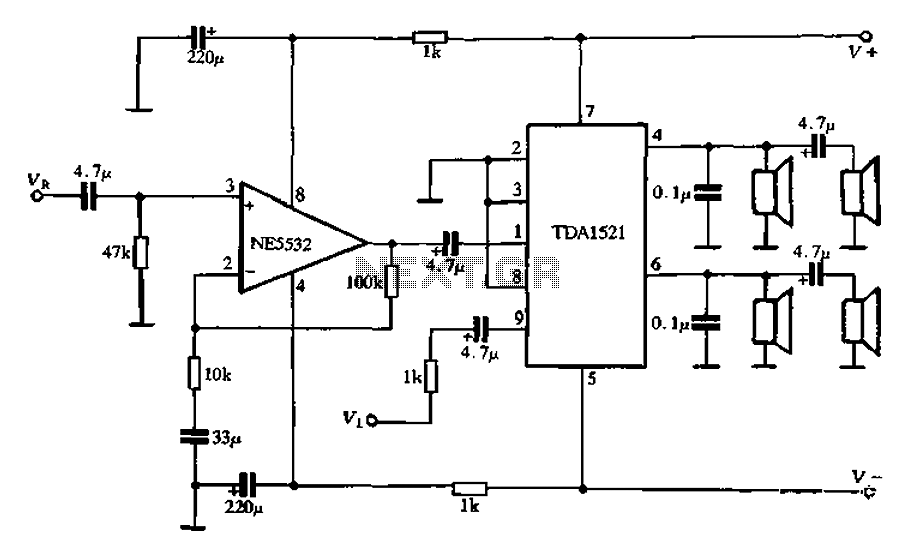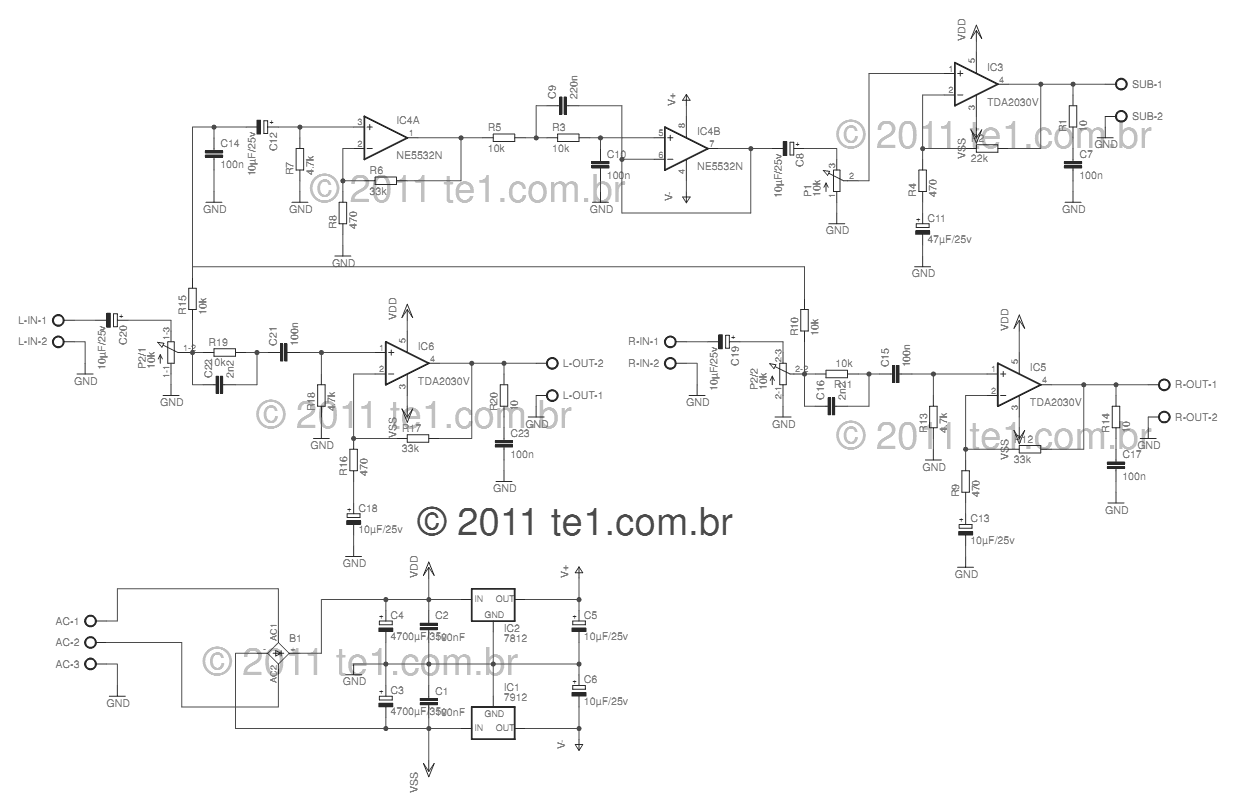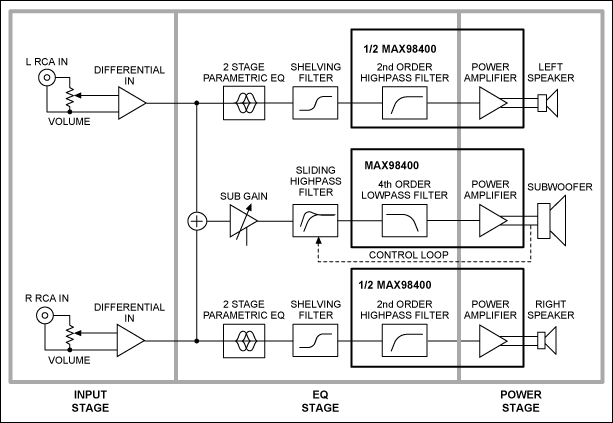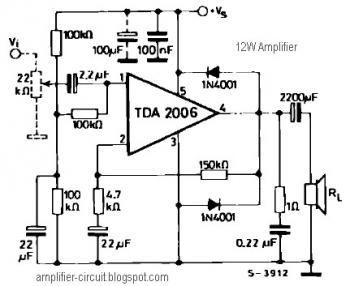
COMPLETE 3 W 400 CPS SERVO AMPLIFIER
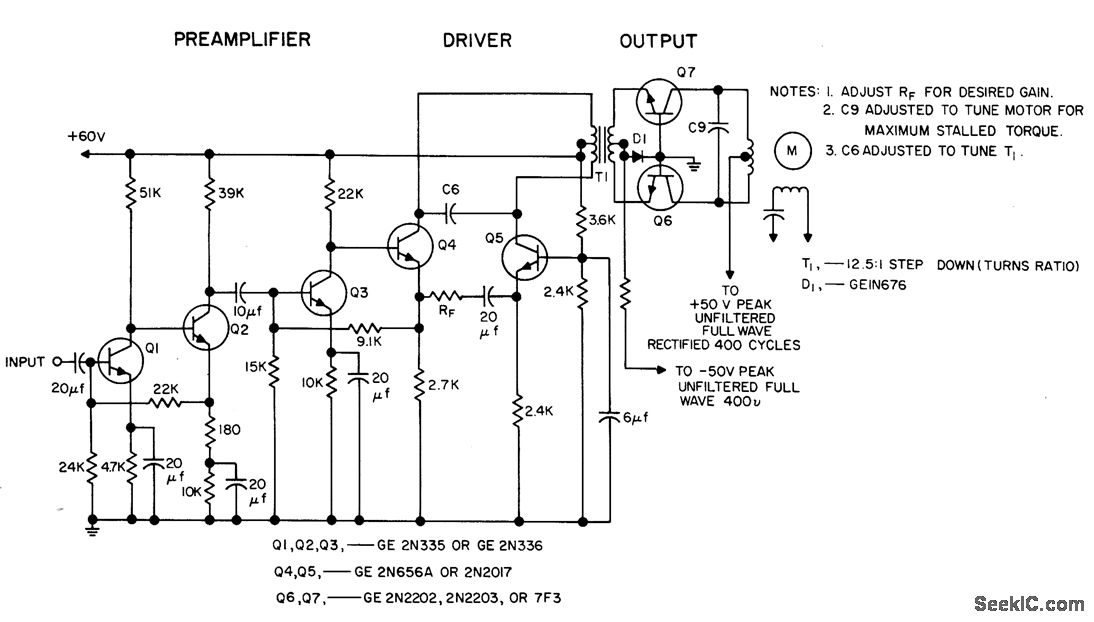
The circuit is capable of driving a 3W servo motor in an ambient temperature range of -55 to 125 degrees Fahrenheit, provided that capacitors rated for 125 degrees Fahrenheit are utilized. The gain can be adjusted over a range of 20,000 to 80,000 amperes per ampere by modifying the RF in the driver circuit. The gain variation remains less than 10% across the specified operating temperature range.
The circuit described is designed for driving a 3W servo motor, which requires careful consideration of its operational environment. The ability to function effectively in extreme temperatures, from -55°F to 125°F, necessitates the use of high-temperature-rated components, particularly capacitors. These components must be selected to ensure reliability and performance under these conditions.
The gain adjustment feature allows for fine-tuning of the circuit's output, enhancing its versatility in various applications. By adjusting the RF component within the driver circuit, the gain can be set anywhere between 20,000 to 80,000 amperes per ampere. This wide range of gain adjustment makes the circuit suitable for different servo motor specifications and loads, enabling it to adapt to various operational requirements.
Moreover, the stability of gain across the operating temperature range is crucial for consistent performance. The specification that gain varies by less than 10% indicates that the circuit maintains its efficiency and effectiveness, which is essential for applications where precision control of the servo motor is required.
In practical applications, this circuit would be implemented in environments such as aerospace, automotive, or industrial automation, where robust performance under extreme conditions is necessary. The design must also consider factors such as power supply requirements, heat dissipation mechanisms, and protection against voltage spikes to ensure long-term reliability and operational integrity.Is capable of driving 3. w servo motor in ambient of -55 to 125ƒ, if capacitors for 125ƒ are used. Gain can be adjusted over range of 20, 000 to 80, 000 amp per amp by adjusting RF in driver circuit. Gain varies less thon 10% over operating temperature range. -"Transistor Manual, " Seventh Edition, General Electric Co. , 1964, p 225. 🔗 External reference
The circuit described is designed for driving a 3W servo motor, which requires careful consideration of its operational environment. The ability to function effectively in extreme temperatures, from -55°F to 125°F, necessitates the use of high-temperature-rated components, particularly capacitors. These components must be selected to ensure reliability and performance under these conditions.
The gain adjustment feature allows for fine-tuning of the circuit's output, enhancing its versatility in various applications. By adjusting the RF component within the driver circuit, the gain can be set anywhere between 20,000 to 80,000 amperes per ampere. This wide range of gain adjustment makes the circuit suitable for different servo motor specifications and loads, enabling it to adapt to various operational requirements.
Moreover, the stability of gain across the operating temperature range is crucial for consistent performance. The specification that gain varies by less than 10% indicates that the circuit maintains its efficiency and effectiveness, which is essential for applications where precision control of the servo motor is required.
In practical applications, this circuit would be implemented in environments such as aerospace, automotive, or industrial automation, where robust performance under extreme conditions is necessary. The design must also consider factors such as power supply requirements, heat dissipation mechanisms, and protection against voltage spikes to ensure long-term reliability and operational integrity.Is capable of driving 3. w servo motor in ambient of -55 to 125ƒ, if capacitors for 125ƒ are used. Gain can be adjusted over range of 20, 000 to 80, 000 amp per amp by adjusting RF in driver circuit. Gain varies less thon 10% over operating temperature range. -"Transistor Manual, " Seventh Edition, General Electric Co. , 1964, p 225. 🔗 External reference
